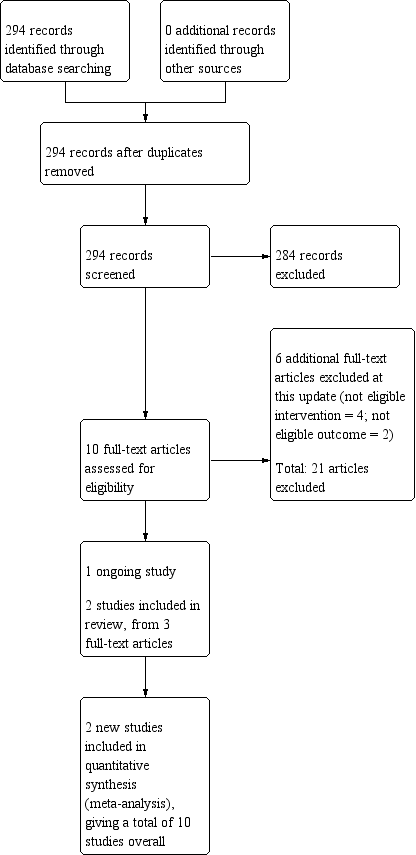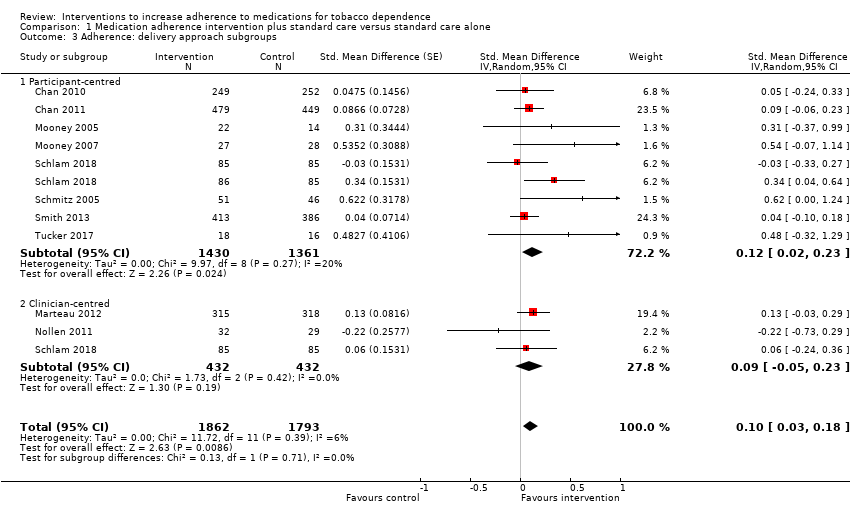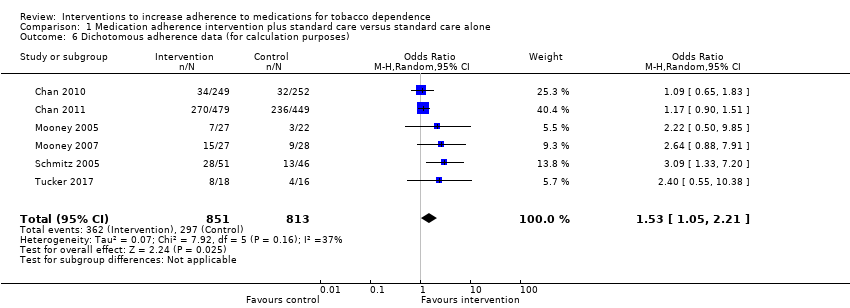Contenido relacionado
Revisiones y protocolos relacionados
Kate Cahill, Sarah Stevens, Rafael Perera, Tim Lancaster | 31 mayo 2013
Intervenciones farmacológicas para la promoción del abandono del hábito de fumar durante el embarazo
Ravinder Claire, Catherine Chamberlain, Mary‐Ann Davey, Sue E Cooper, Ivan Berlin, Jo Leonardi‐Bee, Tim Coleman | 4 marzo 2020
Daniel T Tsoi, Mamta Porwal, Angela C Webster | 28 febrero 2013
Nicola Lindson, Elias Klemperer, Bosun Hong, José M Ordóñez‐Mena, Paul Aveyard | 30 septiembre 2019
Apoyo conductual adicional como complemento a la farmacoterapia para el abandono del hábito de fumar
Jamie Hartmann‐Boyce, Bosun Hong, Jonathan Livingstone‐Banks, Hannah Wheat, Thomas R Fanshawe | 5 junio 2019
Jonathan Livingstone‐Banks, Emma Norris, Jamie Hartmann‐Boyce, Robert West, Martin Jarvis, Emma Chubb, Peter Hajek | 28 octubre 2019
Jon O Ebbert, Muhamad Y Elrashidi, Lindsay F Stead | 26 octubre 2015
Nicola Lindson‐Hawley, Jamie Hartmann‐Boyce, Thomas R Fanshawe, Rachna Begh, Amanda Farley, Tim Lancaster | 13 octubre 2016
Thordis Thomsen, Nete Villebro, Ann Merete Møller | 27 marzo 2014
Regina M van der Meer, Marc C Willemsen, Filip Smit, Pim Cuijpers | 21 agosto 2013
Respuestas clínicas Cochrane
Harish Kavirajan | 7 noviembre 2019
Harish Kavirajan | 12 septiembre 2019
Colecciones especiales
27 mayo 2021














